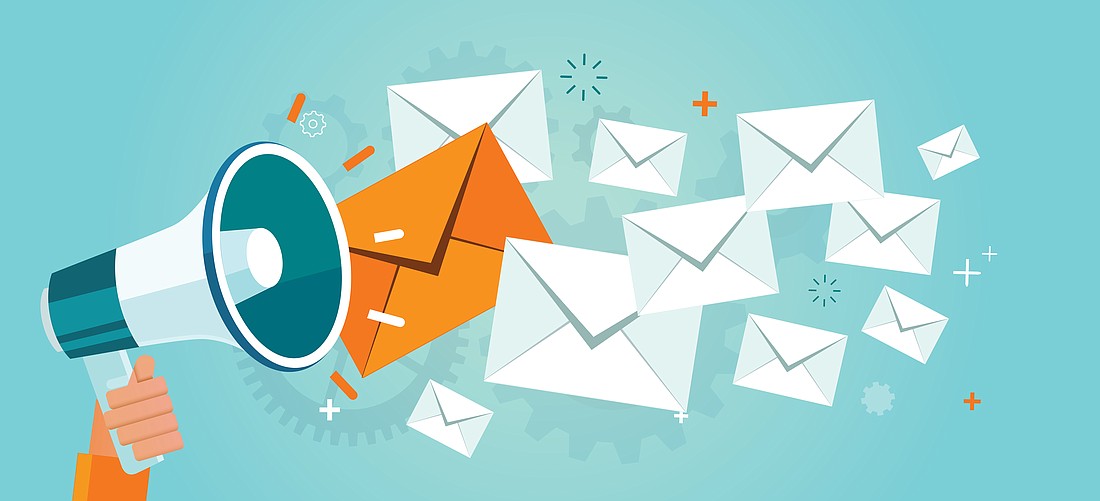- April 1, 2025
-
-
Loading

Newsletters. When done right, they’re a relatively low-cost way to connect with your audience, nurture relationships, and showcase your brand. Done incorrectly, newsletters can lead to negative brand perceptions and a quick unsubscribe.
So how do you avoid the dreaded unsubscribe? Some tips for building a newsletter that stands out in the inbox include:
1. Focus on your audience, not on you. Understand who you’re talking to and what makes them tick – and tailor your message (and distribution list) accordingly.
2. Get creative with subject lines. Shorter subject lines are often better, with a study from Marketo finding the optimal email subject line length to be 7 words and 41 characters. By keeping your subject short, you avoid it being truncated by mobile devices and generate curiosity. Your preheader text (the additional text that appears next to or below the subject line in the inbox) can add context to your subject and provide a sneak peek into the newsletter content.
Test subject line ideas to see what works best with your unique audience. You might try:
It won’t take long to discover which types of subject lines your reader base finds most enticing, and how to use the subject line to boost engagement.
3. Keep your writing conversational. Write like you talk, avoiding jargon, acronyms, and detailed complex concepts. Your writing should be professional and free from grammatical or punctuation errors, while also being relatable.
While you want to inspire readership, you don’t want an email that is a chore to get through. Your audience is likely engaging with your newsletter in between other tasks, not while sitting down with complete focused attention. Knowing this, keep your writing brief: short sentences, bullet points and white space.
4. Deliver compelling content. For your newsletter to be effective, your audience absolutely must find your content valuable. It should be high-quality and purposeful – giving the audience something they may be seeking.
Chances are, your audience doesn’t care about reading a diary about you and your company – they are focused on their own problems. That’s where your newsletter steps in. This is a perfect avenue for relating to your readers and providing solutions, answers to their questions and value.
Pro tip: Going through an audience persona exercise – understanding exactly who your audience is, along with their motivators and what keeps them up at night – will help you figure out how to reach your readers on a personal level while delivering the right messages at the right times.
5. Optimize your call to action. What are you trying to accomplish in your newsletter? Registration for a webinar, taking advantage of a deal, and increasing social media followers are all examples of calls to action, or CTAs. Buttons to click, text links, and hyperlinked images can all be used to prompt readers to take a desired action. Make sure that you are clear on what you want your readers to do so that you can insert appropriate CTAs.
To make your CTA as effective as possible, cut down on hyperlinked copy throughout your email – driving your audience to only click what is relevant. And it’s generally best to only include one CTA per newsletter
6. Make it mobile friendly. According to recent research by HubSpot, the majority of emails are now viewed from mobile devices (41%), followed by desktop (39%), tablets (19%), and other (1%). How can you build your emails with a mobile-first approach?
7. Test, test, test. Before hitting send, take a few minutes to test your email deliverability on several email clients, including desktop and mobile. This will give you the opportunity to make any fixes or adjustments prior to your email landing in your readers’ inbox.
On an ongoing basis, don’t forget to do A/B testing, or sending one variation of your email to a subset of your audience, and another version to another subset. Similarly, you can also test out the success of sending your emails at different times and on different days of the week.
You likely receive some newsletters that you appreciate, and others that you immediately delete. Why do you read certain ones and not others? The ones that you enjoy the most are probably built with your experience in mind, and thoughtfully developed to nurture your relationship with the sender. By employing these techniques, you too can stand out in the inbox.